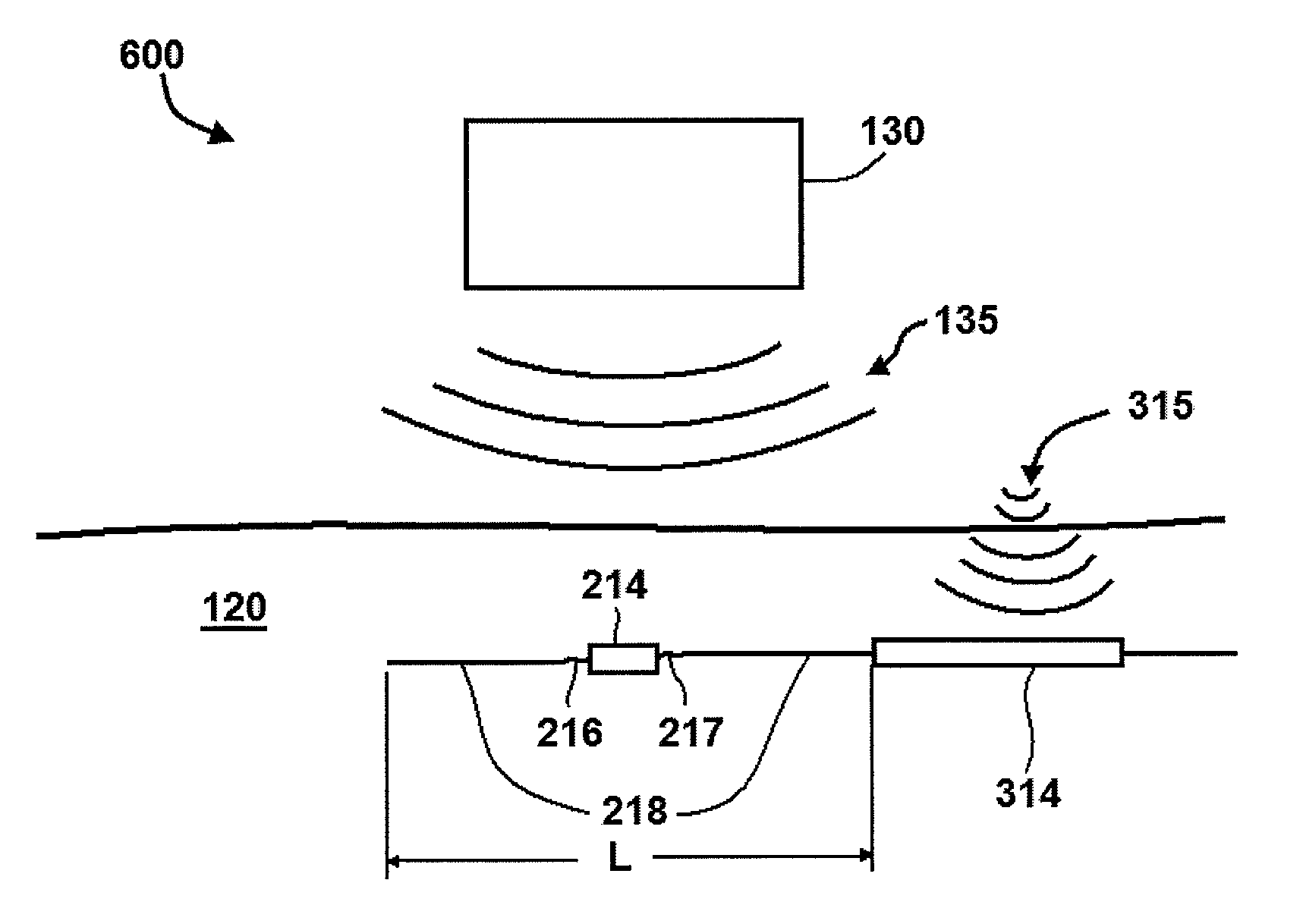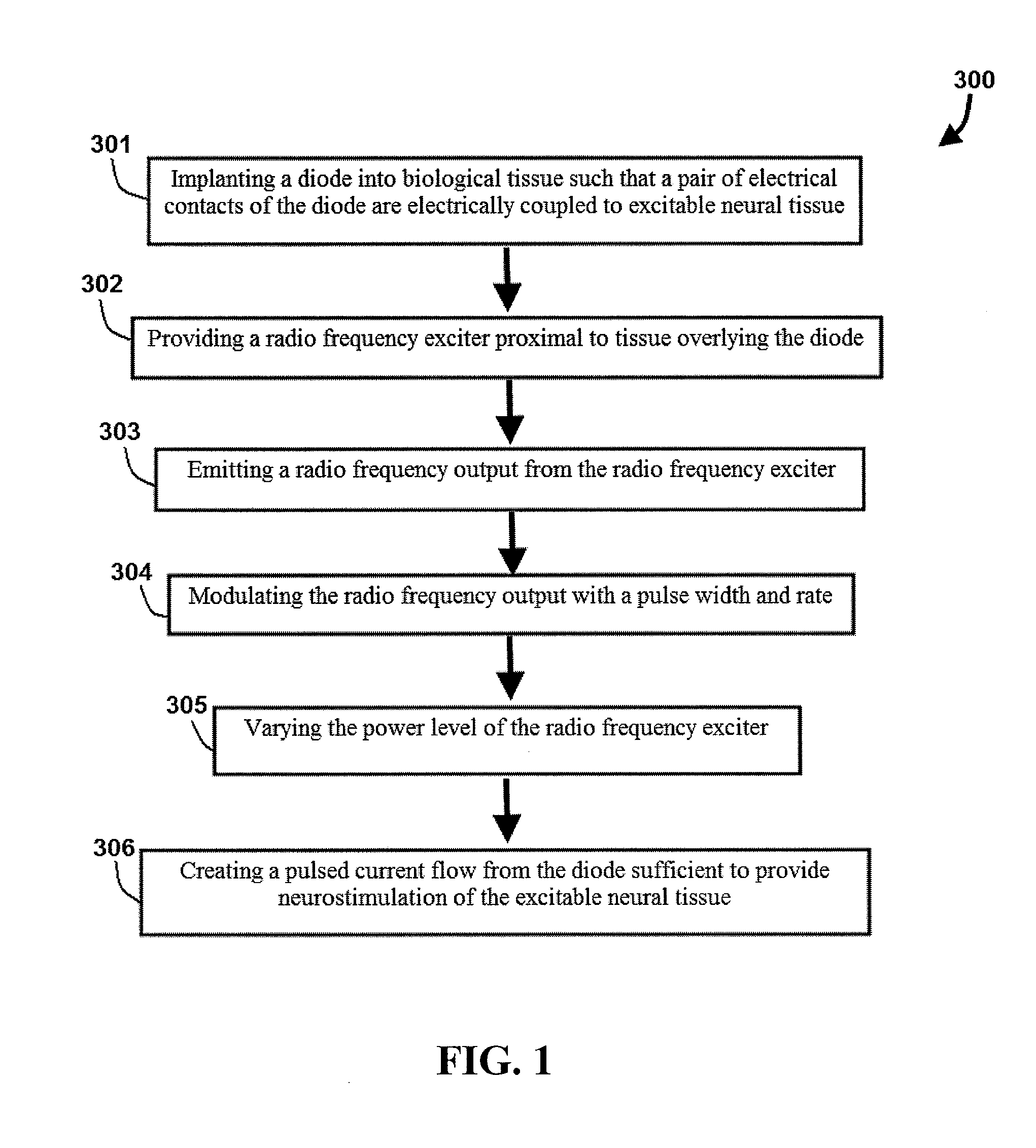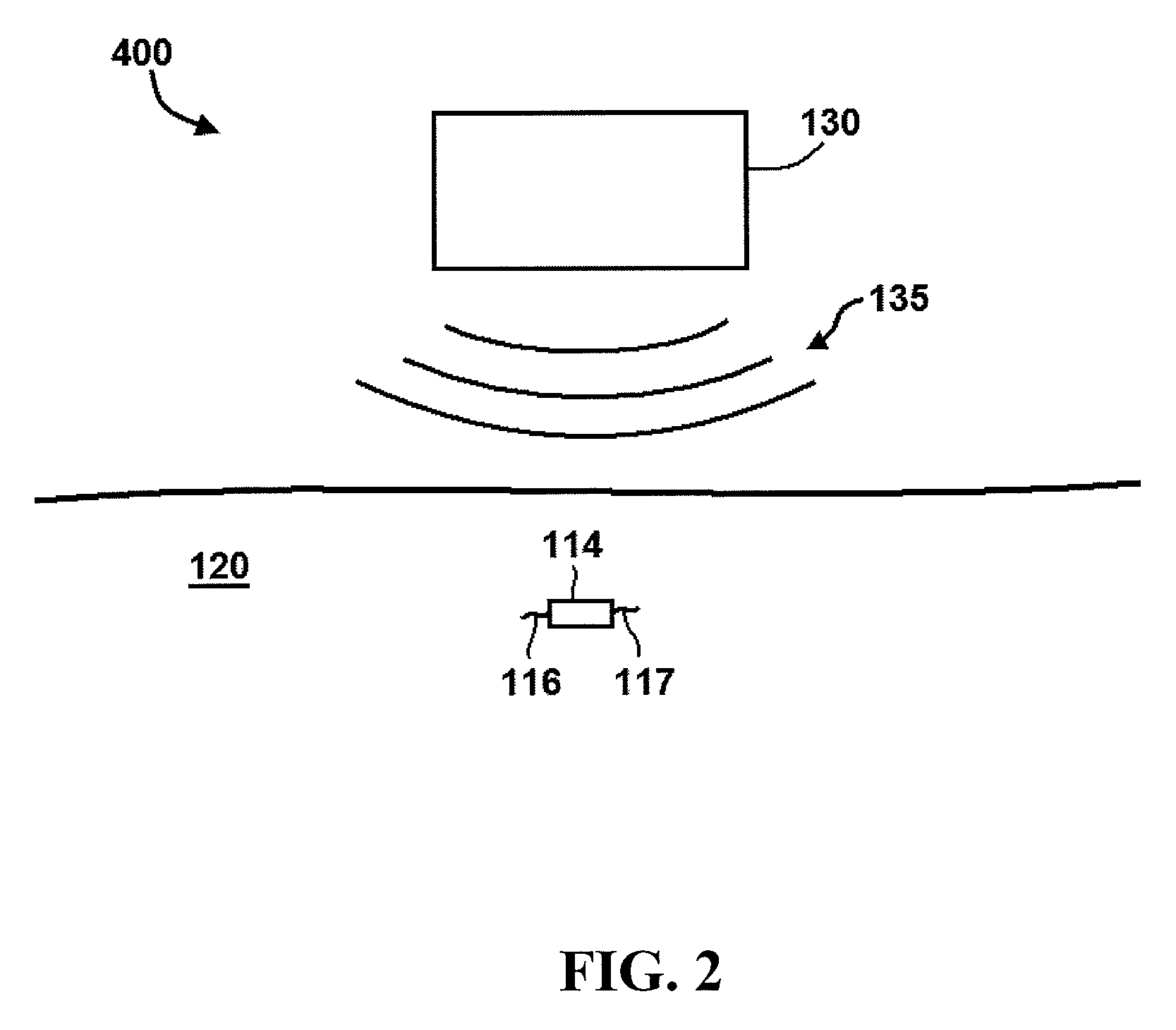Systems, and methods for neurostimulation and neurotelemetry using semiconductor diode systems
a neurotelemetry and semiconductor technology, applied in the field of systems and methods for neurotelemetry and neurotelemetry using semiconductor diode systems, can solve the problems of difficult specific stimulation of a given nerve or nerve fiber within a bundle, inability to reach deeper tissues, and large relative complexity and size of the bundle, so as to reduce surgical trauma, improve the practicality, and extend the range of potential clinical applications.
- Summary
- Abstract
- Description
- Claims
- Application Information
AI Technical Summary
Benefits of technology
Problems solved by technology
Method used
Image
Examples
Embodiment Construction
[0041]Exemplary embodiments of the present invention include systems and methods for providing neurostimulation and / or neurotelemetry to biological tissues. An overview of exemplary methods will be provided initially, followed by more detailed description of specific features of exemplary systems and methods.
[0042]Neurostimulation Embodiments
[0043]Referring initially to FIG. 1, an exemplary method 300 of providing neurostimulation to biological tissues is shown. It is understood that while features of method 300 are shown and described in FIG. 1 as individual “steps”, this embodiment is not limiting. Other embodiments may comprise different combinations of the individual features shown and described in FIG. 1 or may comprise the features in a different order than that shown in FIG. 1.
[0044]Method 300 comprises a step 301 of implanting a diode into biological tissue such that the electrical contacts of the diode are electrically coupled to excitable neural tissue. In this embodiment,...
PUM
 Login to View More
Login to View More Abstract
Description
Claims
Application Information
 Login to View More
Login to View More - R&D
- Intellectual Property
- Life Sciences
- Materials
- Tech Scout
- Unparalleled Data Quality
- Higher Quality Content
- 60% Fewer Hallucinations
Browse by: Latest US Patents, China's latest patents, Technical Efficacy Thesaurus, Application Domain, Technology Topic, Popular Technical Reports.
© 2025 PatSnap. All rights reserved.Legal|Privacy policy|Modern Slavery Act Transparency Statement|Sitemap|About US| Contact US: help@patsnap.com



